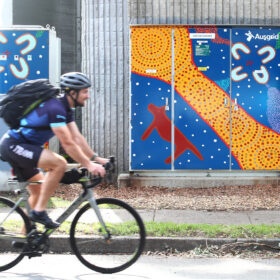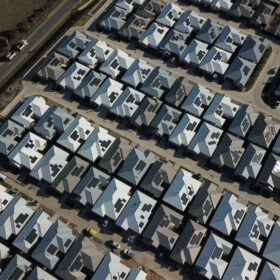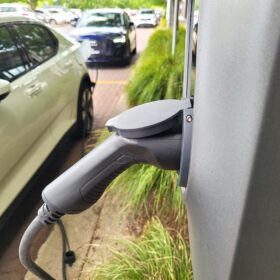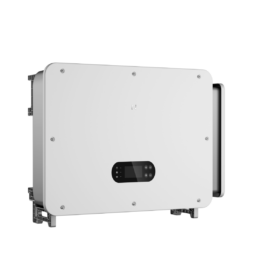The project will analyse the features that enabled Utrecht’s success and reframe them to suit Australia’s distinct energy and mobility landscape.
It will explore inclusive and lower cost AC-V2G pathways, to be able to bring this technology to more Australians. Should Australia and the Pacific host COP31, the Utrecht to Australia project will seek to use that platform to amplify its impact.
This is one of eight projects that have been 100% funded by iMOVE as part of the second round of the Impact Extenstion Program (IEP2).
Project background
The Utrecht to Australia project aims to unlock scalable, low-cost, bi-directional electric vehicle (EV) technology in Australia by leveraging the international experience of Utrecht and adapting proven European approaches, such as the use of AC bi-directional charging to local conditions.
Moving beyond pilot programs
The focus is on overcoming the barriers that have previously prevented V2G from progressing beyond pilots in Australia and internationally, but which Utrecht has overcome to deliver a large-scale, city-wide, commercial rollout of bi-directional EV technology.
According to Australia’s National Roadmap for Bidirectional Charging Background Modelling Report, the long-term cost premium of AC bi-directional charging (AC-V2G) in comparison to uni-directional charging is 6 times less than a standard DC bi-directional charger (DC-V2G) ($500 versus $3,000), making it a suitable choice for rollout of bi-directional charging at scale.
Australian barriers to date
However, the pathway to introducing AC-V2G charging in Australia is less straightforward as it requires an EV’s onboard inverter in order to achieve compliance to Australian grid codes (along with the grid codes of every other market that vehicle is supplied into).
Net Zero Engineering Solutions has been working to bring We Drive Solar’s proven AC-V2G charger and Renault 5 vehicle combination from Utrecht to Australia, however this requires however the Renault 5 to be homologated for the Australian market and its unique grid codes.
Amending Australian standards
This project would represent the first time an AC-V2G charger has been brought into the Australian market, with the compliance pathway being unchartered territory.
One of the implications of this is that the key Australian Standard governing approval of bi-directional charging – AS4777.2 – Grid connection of energy systems via inverters, Part 2: Inverter requirements – is currently untested in its ability to in practice support AC-V2G technology.
It was written with the intention of providing a pathway for both AC and DC bi-directional charging to receive grid code approval. However, the latest revision was able to draw from knowledge gained from market entry of a DC-V2G product, but not AC, and so amendments may be required to support this.
Dutch grid operators have worked collaboratively to allow innovation and ensure a regulatory pathway was available that supported the market entry of AC-V2G technology.
To achieve this, they are not only redefining elements of the Netherlands grid codes, recognising the substantial role this technology can play in grid support, but also driving harmonisation in grid code requirements.
Being able to apply a similar process in Australia may also be required, in particular, via informing the next re-write or amendment of AS4777.2 – Grid connection of energy systems via inverters, Part 2: Inverter requirements.
Lowering costs and barriers to market entry
A key lesson from Utrecht, and the Smart Charging Alignment Europe (SCALE) – EU Horizon’s project – is the need to drive homologation across markets to lower costs and barriers to market entry.
This work is also being supported by the International Energy Agency’s Electric Vehicle Technology Collaboration Program Task 53 on Interoperability of Bi-directional Charging. COP31 provides an opportunity to further drive interoperability and homologation on an international stage, helping to accelerate V2G in Australia and globally.
Net Zero Engineering Solutions has been working with the South Australian Government and others to draft a COP31 Declaration on V2G, and plans to undertake further work to support these efforts, including through international collaboration and promotion of a V2G Declaration.
V2G for both private and fleet EV owners
V2G in Utrecht centres around a carshare mobility model. While there is an opportunity to introduce a V2G carshare model to support mobility at COP31, in general, carshare does not currently play a significant role in Australia’s mobility landscape.
A V2G (and smart charging) model that is more impactful in Australia is one that facilitates V2G for private and fleet EV owners.
As such, Net Zero Engineering Solutions has been applying for funding to develop a mobile energy plan solution.
This was born out of a recognition that vehicle-to-grid, and its subset vehicle-to-home/building, is great for those users with vehicles parked at home all day, who can access their own solar for EV charging, but for the more than 50% of Australians who commute and for those without access to off-street parking. They may be locked out of the benefits this technology provides.
Depending on the success of establishing a large-scale V2G project which may use up the remaining available funding, and the outcomes of other grant funding applications, any remaining funding under iMOVE’s IEP2 may be pivoted to support activities related to this mobile energy plan project.
Letters of support for this initiative to help unlock both smart charging and V2G, have been received from Origin, AGL, EnergyAustralia, Amber Electric, Essential Energy, EVX, ChargePost, and the RAA.
Project objectives
A core objective of the project is to enable broad access to V2G through the deployment and adaptation of AC-based bidirectional chargers, which are significantly more affordable than DC alternatives.
This project aims to contribute to the mass rollout of bidirectional charging in Australia by
- Attracting and encouraging one or multiple EV OEMs to offer AC-V2G solutions in Australia.
- Identifying key gaps between AS4777.2 – Grid connection of energy systems via inverters, Part 2: Inverter requirements and the capability of EV OEMs to comply with these in relation to AC-V2G.
- Seeking opportunities to leverage an Australia and Pacific hosted COP31 to accelerate rollout of V2G, both nationally and internationally.
This project will leverage international collaborations and learnings to facilitate the above.
Depending on the success of being able to establish a large-scale V2G project and available funding, the project may expand its objectives to include foundational work to help unlock mobile energy plans.






By submitting this form you agree to pv magazine using your data for the purposes of publishing your comment.
Your personal data will only be disclosed or otherwise transmitted to third parties for the purposes of spam filtering or if this is necessary for technical maintenance of the website. Any other transfer to third parties will not take place unless this is justified on the basis of applicable data protection regulations or if pv magazine is legally obliged to do so.
You may revoke this consent at any time with effect for the future, in which case your personal data will be deleted immediately. Otherwise, your data will be deleted if pv magazine has processed your request or the purpose of data storage is fulfilled.
Further information on data privacy can be found in our Data Protection Policy.